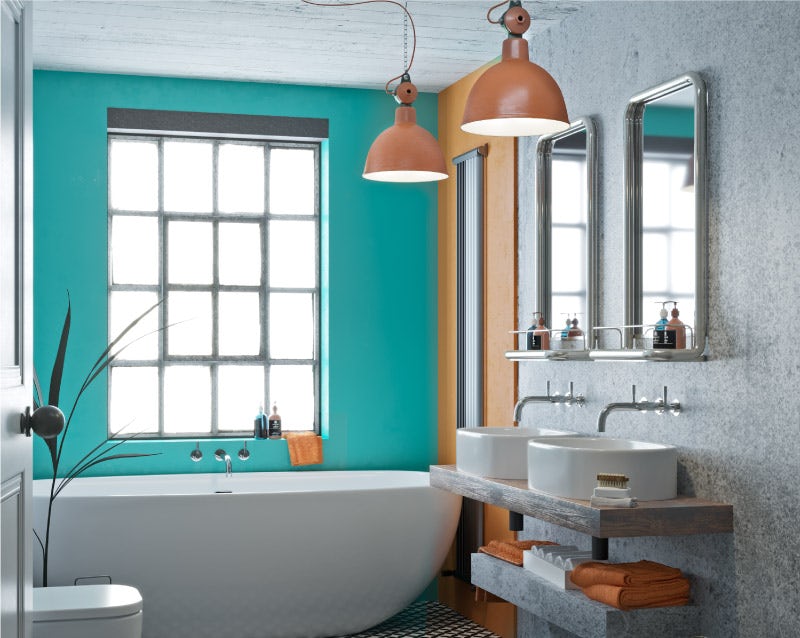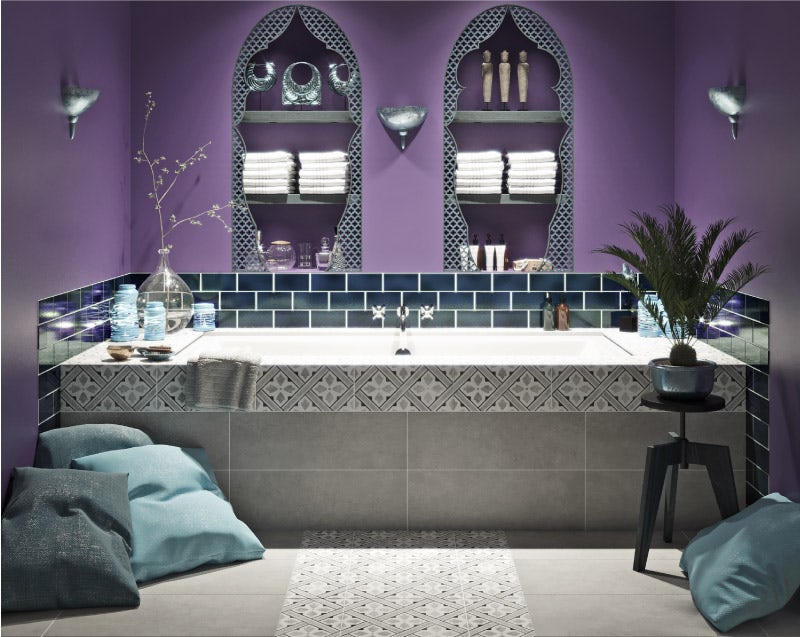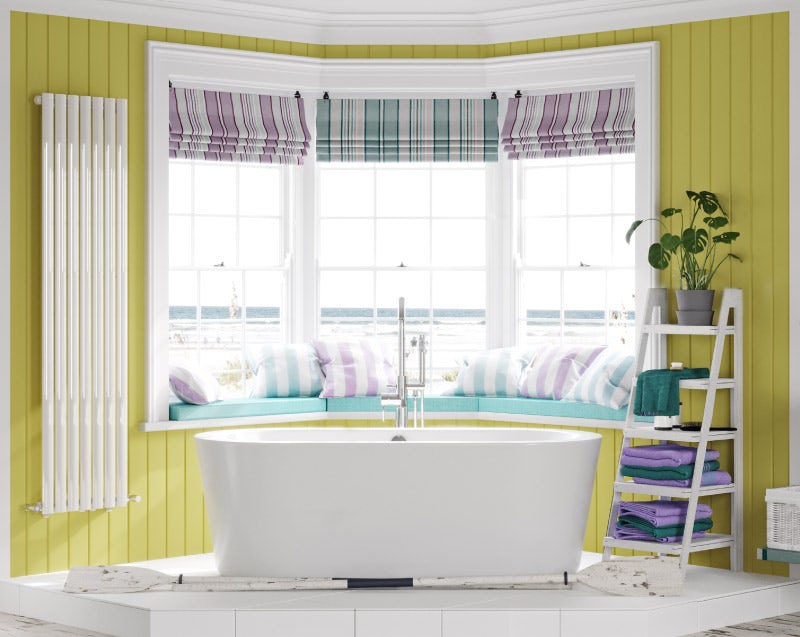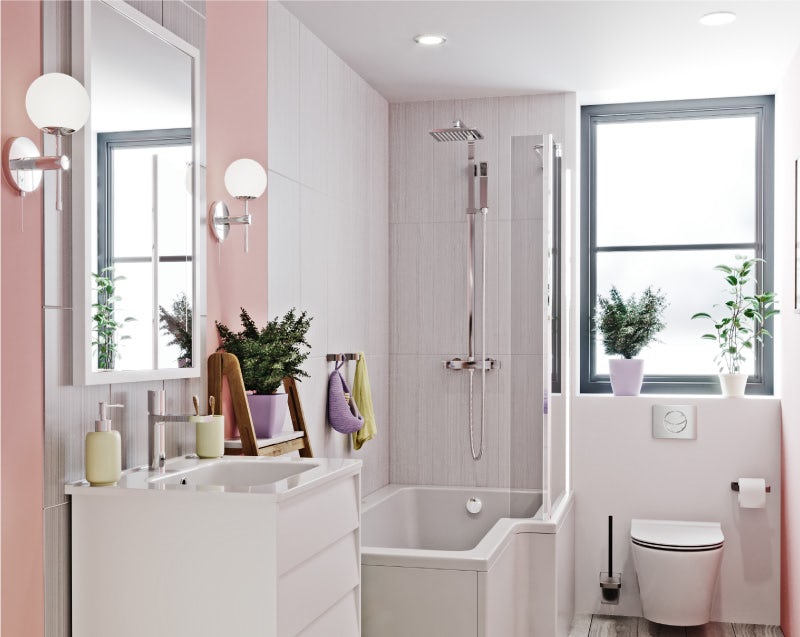
In the latest of our series of "working with colour" articles, our expert stylist Nicky will show you how to use a colour wheel to create a brilliant colour scheme for your bathroom.
So, first things first, what is a colour wheel and why would you need to use it? Well, as with everything in life, when artists or designers put different colours together to create something that looks visually pleasing, this doesn’t happen by accident. One of the handiest tools in any interior designer’s locker is the colour wheel.
Showing the relationship between different colours in a graphical way, the colour wheel can help anyone to look for colours which go well together. It’s ideal when you’re creating new décor, especially in areas of your home like your bathroom and can be purchased easily online.
In this blog post, we’ll take a look at the colour wheel in greater detail, explain some of the common yet often puzzling terms used when describing colours and show you how to create your own colour scheme.
The colour wheel
In this section, we’ll introduce you to colour wheel and what colours it contains.
The colour wheel is based around 3 primary colours: Red, yellow and blue.
When you mix 2 of these together, you get secondary colours: Blue and yellow make green. Yellow and red make orange. Red and blue make purple.
Mixing with secondaries will make tertiary colours: Red purple, Red orange, Blue purple, Blue green, Yellow green and Yellow orange.
So, to recap, you create secondaries by mixing primary colours. And by adding a primary colour to a secondary colour you get tertiary colours. And that’s what makes up the colour wheel.
Colour theory terms
To help you understand the colour wheel, here is a quick guide to common colour theory terms.
Hue
A hue is another term for a colour. Use primary and secondary colours for this.
Saturation
Saturation refers to the purity of a colour. A colour with high saturation is often intense and bright, whereas colours with low saturation will appear dull.
Shade
Shades are created when you add black to a hue. Adding black to yellow in increasing amounts will create darker shades of yellow.
Tint
Tints are the opposite of shades. Instead of adding black, we add white. And by adding increasing amounts of white to blue, we get lighter and lighter tints of blue.
Tone
Adding grey to a hue creates a tone.
Colour temperature
And finally, colour temperatures refer to warm colours like yellows, oranges and reds, and cool colours such as blues, purples and greens. Warm colours often appear bold and cheerful, contrasting with the calmer and more subtle feel of cool colours.
How to use the colour wheel to create colour schemes
Watch this short video in which I explain how to use the colour wheel to create colour schemes.
One use of the colour wheel is to create colour schemes and these fall into several categories. These are:
- Complementary
- Analogous
- Triadic
- Split-complementary
- Tetradic—Rectangular & Square
Complementary colour schemes
If you’re working with red, for example, you’ll find the complementary colour on the opposite side of the colour well, which, in this case, is green.
These 2 colours work brilliantly together and create the perfect bold statement. Using on-trend burnt orange with vibrant turquoise is what makes this look so appealing. But be warned—it’s not for the faint-hearted!
Analogous colour schemes
Analogous colour schemes use the colours either side of your chosen colour on the wheel. They match well together and create a serene and comfortable design.
Purple is the main colour in this look. Paired with a deep navy and light shades of blue, it creates a well-balanced and mystical feel.
Triadic colour schemes
Next, we have triadic schemes which make use of 3 points on the colour wheel. Such as purple, orange and green. A triadic scheme can impact a sense of harmony and is best used with reduced saturation. This look is all about having a healthy balance of 3 colours, which are split perfectly in a triangle on the colour wheel.
You often see blue and yellow working well together, however, if you wish to push this scheme a little further, try adding a touch of beetroot pink.
Split-complementary colour schemes
For a split-complementary colour scheme, choose the base, then look for the 2 colours either side of the opposite colour. This creates strong visual contrast whilst still being a little softer than a complementary colour scheme.
This look is great for adding extra character without being too overbearing. If the colours are split evenly it will create a harmonising finish.
Tetradic colour schemes
Tetradic schemes offer a little more complexity than the previous options by introducing a fourth colour. These schemes are created from 2 complementing pairs and can offer plenty of possibilities. Just remember to balance the warm and cool colours.
I’ve chosen pastel colours for this theme. Having 4 colours in one room is quite a bold move, so toning them down slightly will really help.
More bright ideas for your bathroom colour scheme
If you’re looking for bathroom colour ideas, why not browse the articles below?








